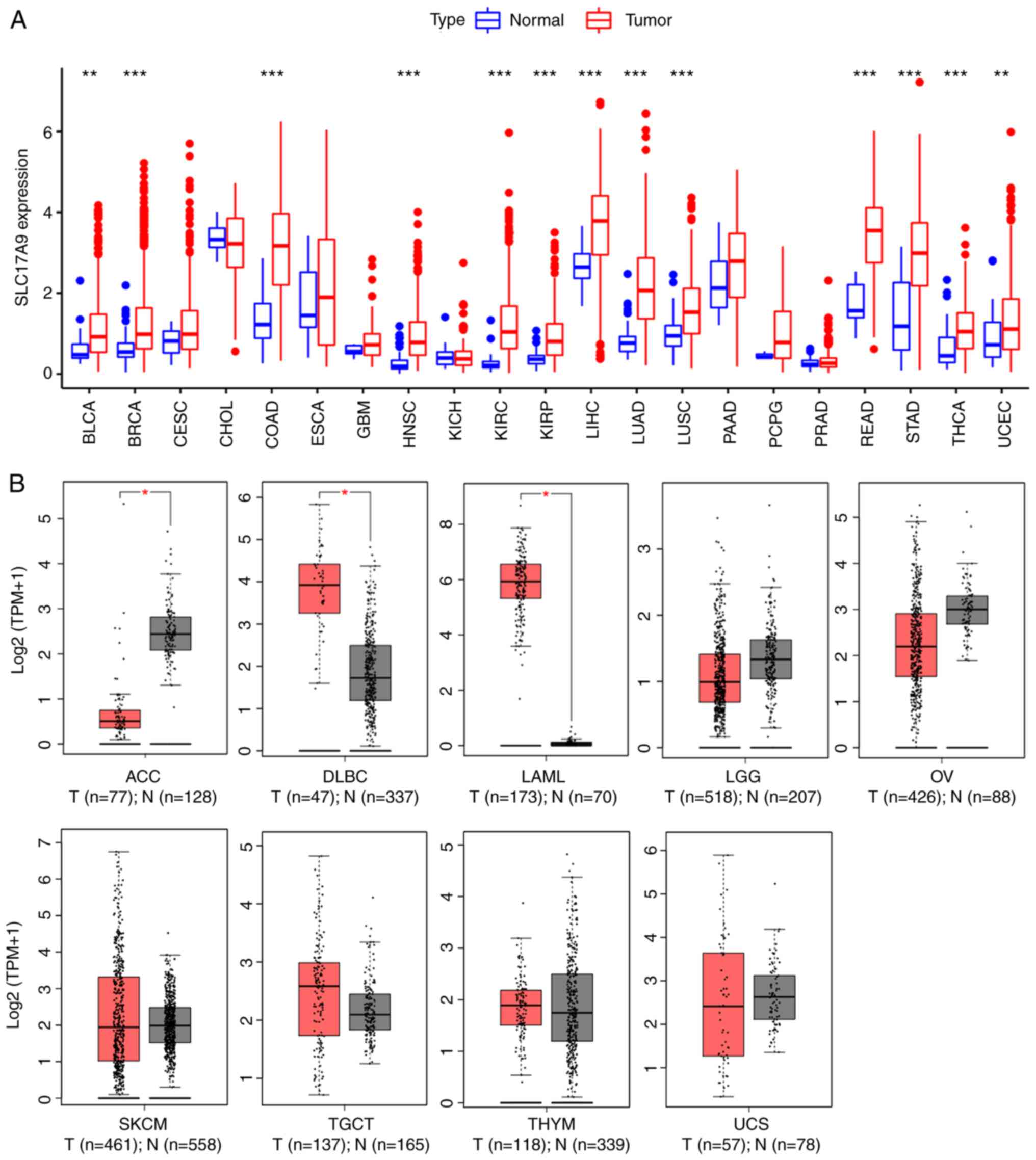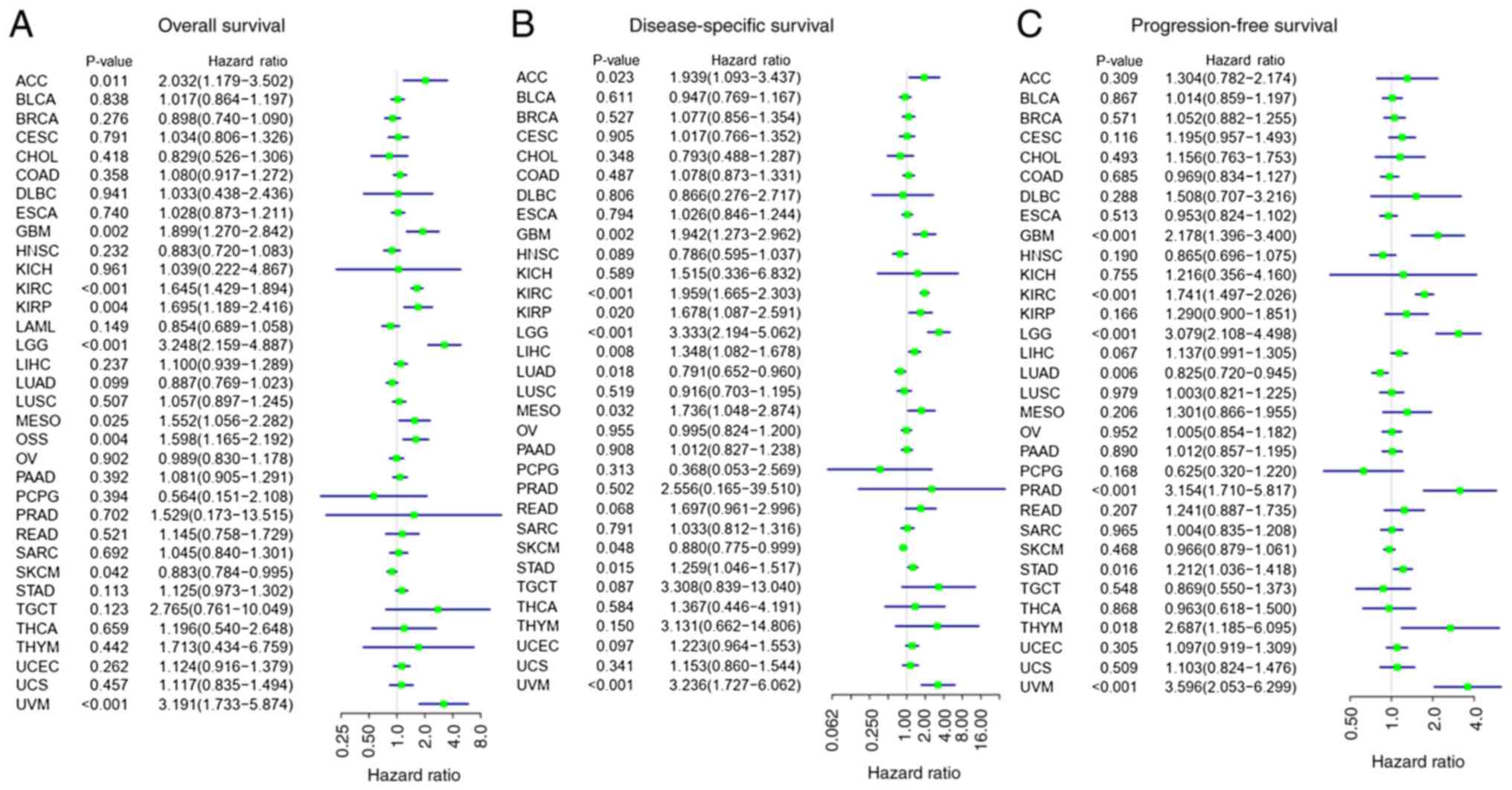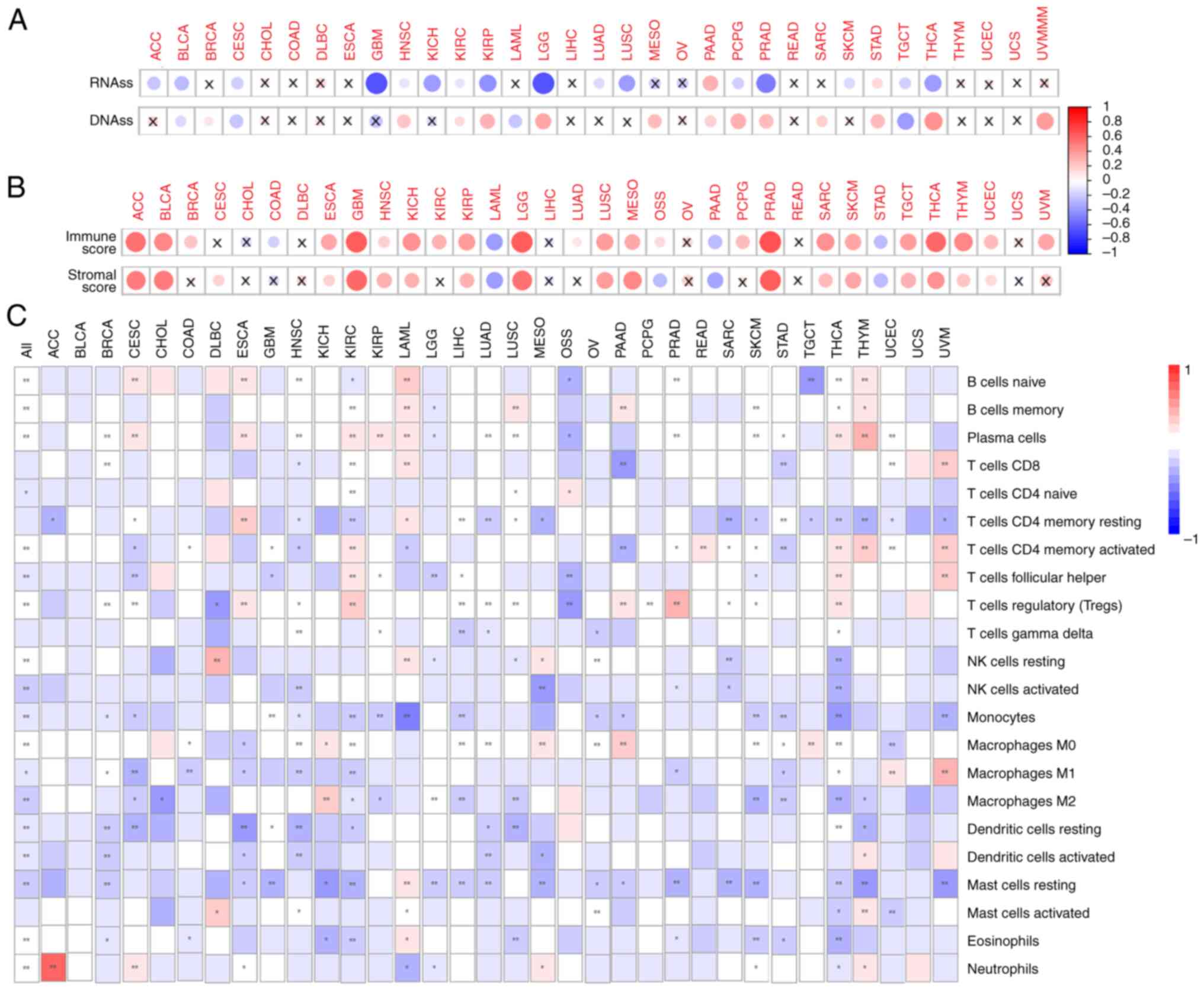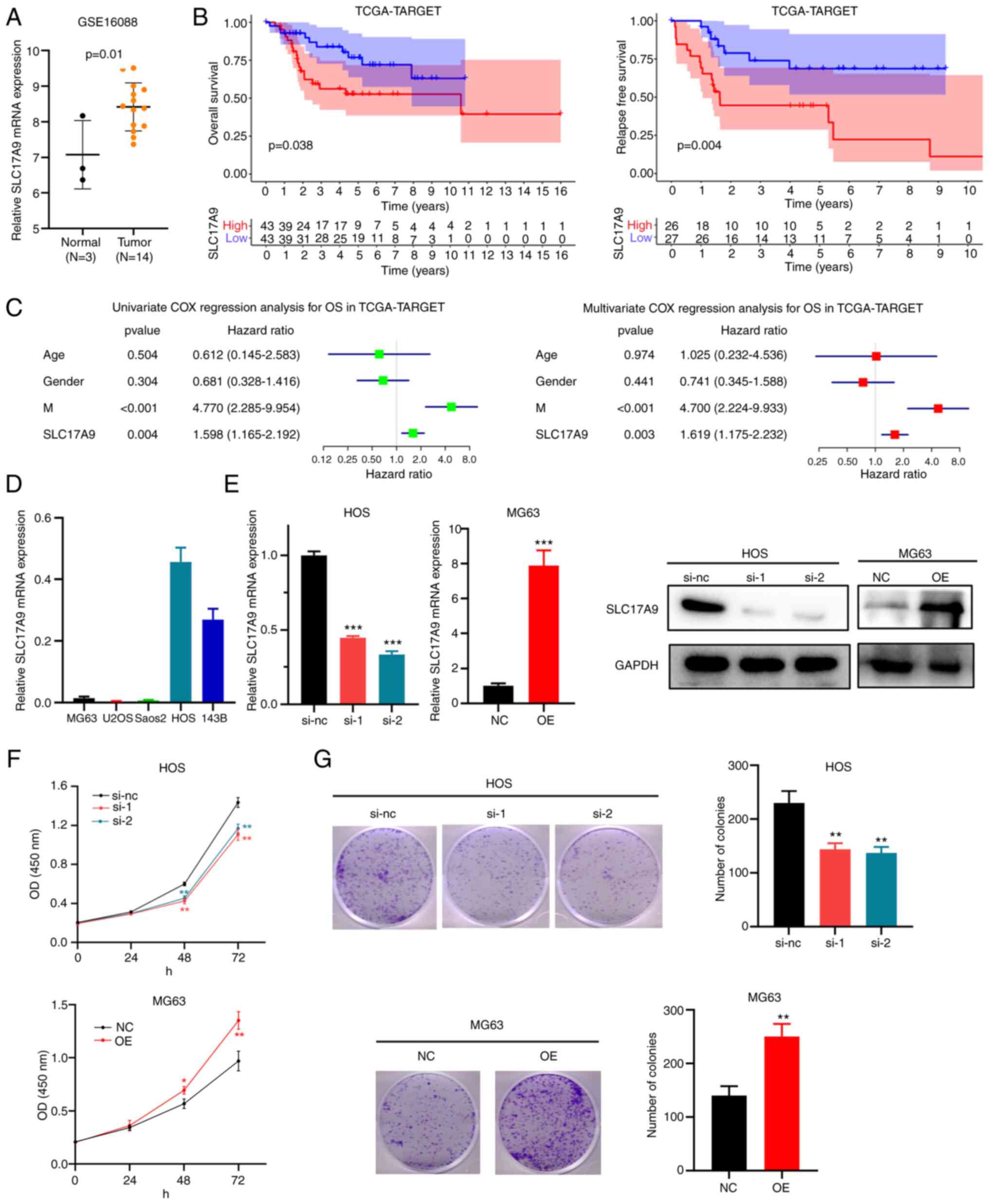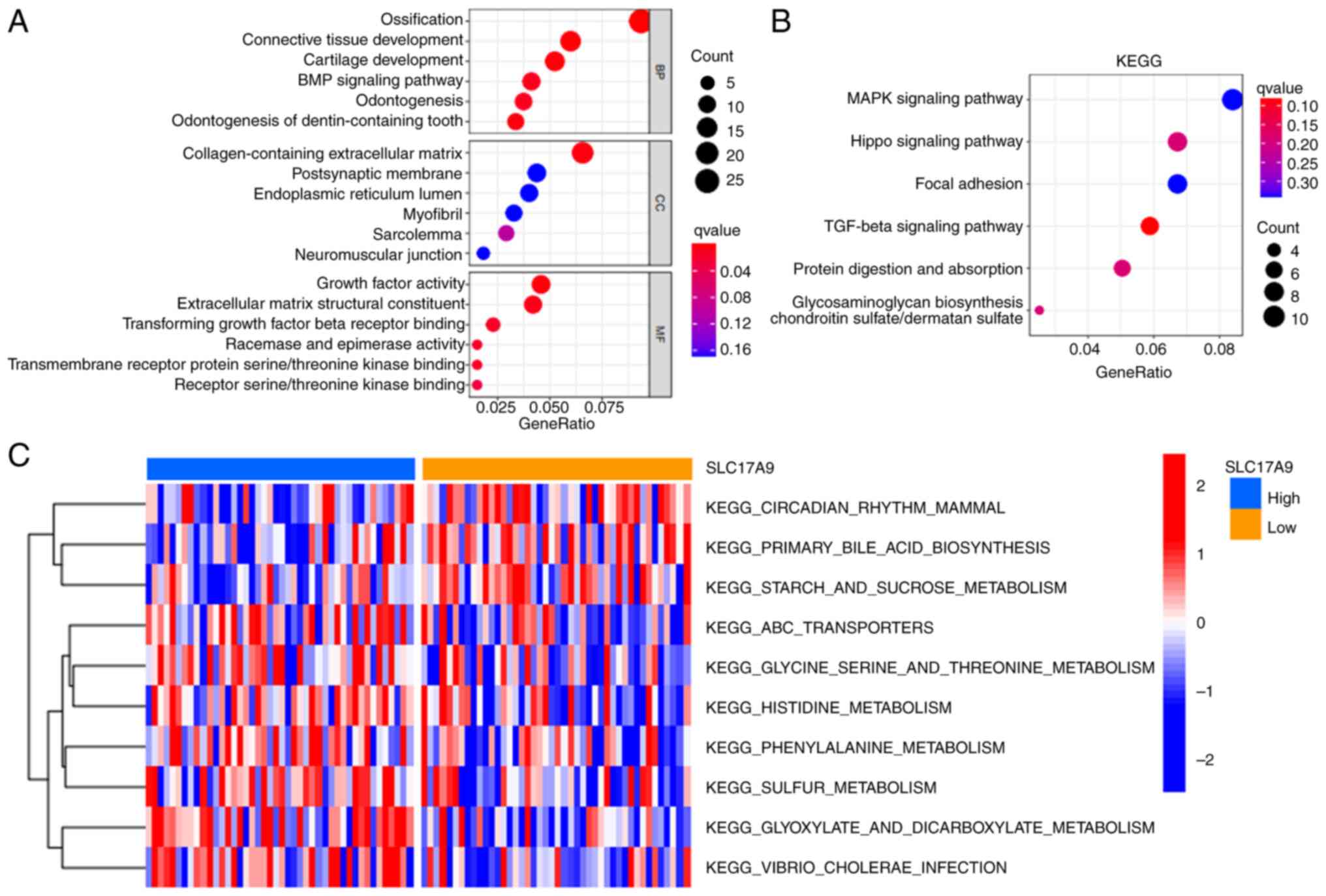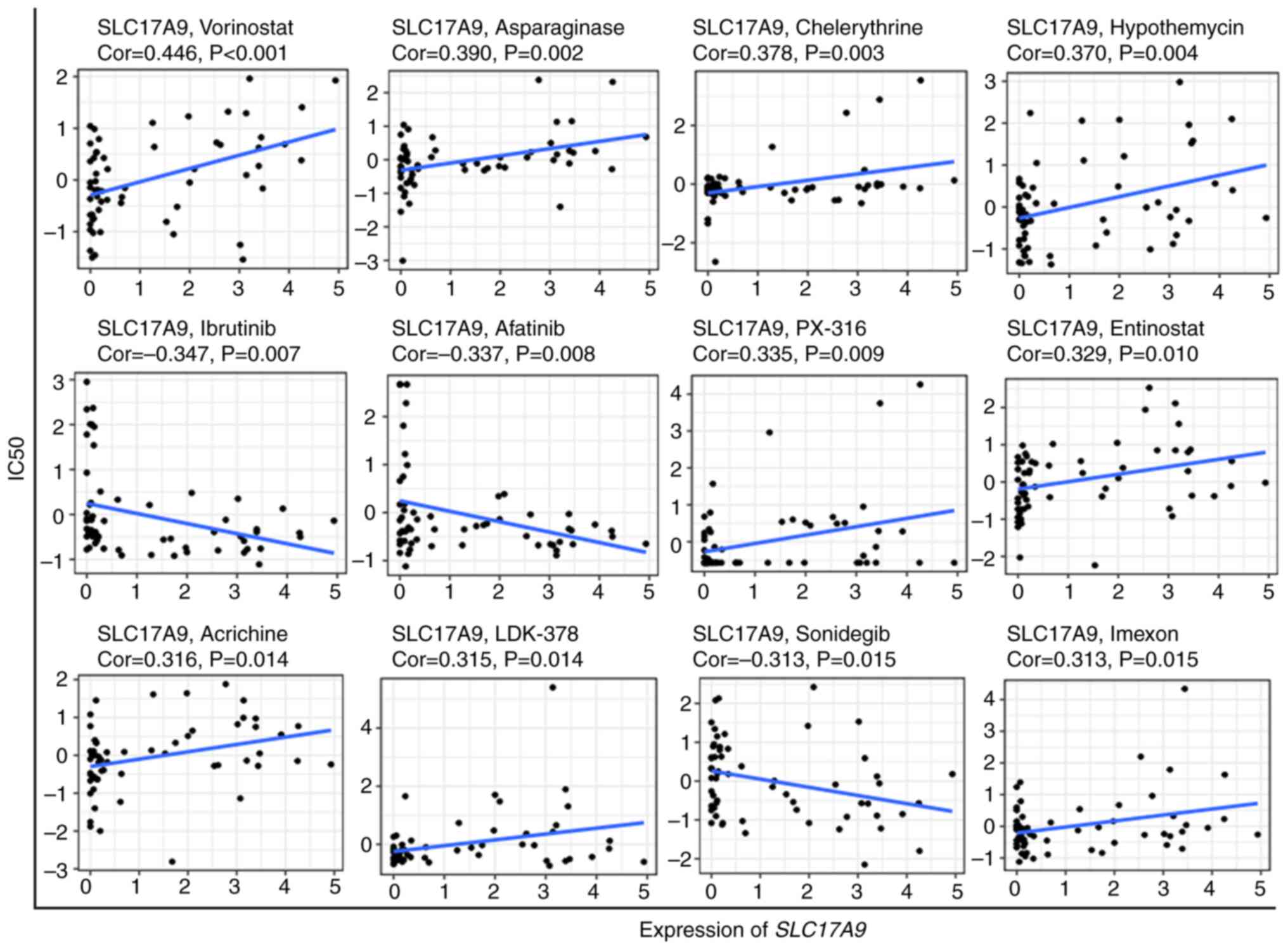|
1
|
Cao Q, Zhao K, Zhong XZ, Zou Y, Yu H,
Huang P, Xu TL and Dong XP: SLC17A9 protein functions as a
lysosomal ATP transporter and regulates cell viability. J Biol
Chem. 289:23189–23199. 2014. View Article : Google Scholar : PubMed/NCBI
|
|
2
|
Huang P, Cao Q, Xu M and Dong XP:
Lysosomal ATP Transporter SLC17A9 controls cell viability via
regulating cathepsin D. Cells. 11:8872022. View Article : Google Scholar : PubMed/NCBI
|
|
3
|
Yang L, Chen Z, Xiong W, Ren H, Zhai E, Xu
K, Yang H, Zhang Z, Ding L, He Y, et al: High expression of SLC17A9
correlates with poor prognosis in colorectal cancer. Hum Pathol.
84:62–70. 2019. View Article : Google Scholar : PubMed/NCBI
|
|
4
|
Li J, Su T, Yang L, Deng L, Zhang C and He
Y: High SLC17A9 expression correlates with poor survival in gastric
carcinoma. Future Oncol. 15:4155–4166. 2019. View Article : Google Scholar : PubMed/NCBI
|
|
5
|
Sun M, Qiu J, Zhai H, Wang Y, Ma P, Li M
and Chen B: Prognostic implications of novel gene signatures in
gastric cancer microenvironment. Med Sci Monit. 26:e9246042020.
View Article : Google Scholar : PubMed/NCBI
|
|
6
|
Kui XY, Gao Y, Liu XS, Zeng J, Yang JW,
Zhou LM, Liu XY, Zhang Y, Zhang YH and Pei ZJ: Comprehensive
analysis of SLC17A9 and its prognostic value in hepatocellular
carcinoma. Front Oncol. 12:8098472022. View Article : Google Scholar : PubMed/NCBI
|
|
7
|
Mi YY, Sun CY, Zhang LF, Wang J, Shao HB,
Qin F, Xia GW and Zhu LJ: Long Non-coding RNAs LINC01679 as a
competitive endogenous RNAs inhibits the development and
progression of prostate cancer via regulating the
miR-3150a-3p/SLC17A9 axis. Front Cell Dev Biol. 9:7378122021.
View Article : Google Scholar : PubMed/NCBI
|
|
8
|
Goldman MJ, Craft B, Hastie M, Repečka K,
McDade F, Kamath A, Banerjee A, Luo Y, Rogers D, Brooks AN, et al:
Visualizing and interpreting cancer genomics data via the Xena
platform. Nat Biotechnol. 38:675–678. 2020. View Article : Google Scholar : PubMed/NCBI
|
|
9
|
Blum A, Wang P and Zenklusen JC: SnapShot:
TCGA-Analyzed tumors. Cell. 173:5302018. View Article : Google Scholar : PubMed/NCBI
|
|
10
|
Tang Z, Li C, Kang B, Gao G, Li C and
Zhang Z: GEPIA: A web server for cancer and normal gene expression
profiling and interactive analyses. Nucleic Acids Res. 45((W1)):
W98–W102. 2017. View Article : Google Scholar : PubMed/NCBI
|
|
11
|
Lánczky A and Győrffy B: Web-Based
survival analysis tool tailored for medical research (KMplot):
Development and implementation. J Med Internet Res. 23:e276332021.
View Article : Google Scholar : PubMed/NCBI
|
|
12
|
Malta TM, Sokolov A, Gentles AJ,
Burzykowski T, Poisson L, Weinstein JN, Kamińska B, Huelsken J,
Omberg L, Gevaert O, et al: Machine learning identifies stemness
features associated with oncogenic dedifferentiation. Cell.
173:338–354.e15. 2018. View Article : Google Scholar : PubMed/NCBI
|
|
13
|
Yoshihara K, Shahmoradgoli M, Martínez E,
Vegesna R, Kim H, Torres-Garcia W, Treviño V, Shen H, Laird PW,
Levine DA, et al: Inferring tumour purity and stromal and immune
cell admixture from expression data. Nat Commun. 4:26122013.
View Article : Google Scholar : PubMed/NCBI
|
|
14
|
Newman AM, Liu CL, Green MR, Gentles AJ,
Feng W, Xu Y, Hoang CD, Diehn M and Alizadeh AA: Robust enumeration
of cell subsets from tissue expression profiles. Nat Methods.
12:453–457. 2015. View Article : Google Scholar : PubMed/NCBI
|
|
15
|
Reinhold WC, Sunshine M, Liu H, Varma S,
Kohn KW, Morris J, Doroshow J and Pommier Y: CellMiner: A web-based
suite of genomic and pharmacologic tools to explore transcript and
drug patterns in the NCI-60 cell line set. Cancer Res.
72:3499–3511. 2012. View Article : Google Scholar : PubMed/NCBI
|
|
16
|
Yu G, Wang LG, Han Y and He QY:
clusterProfiler: An R package for comparing biological themes among
gene clusters. OMICS. 16:284–287. 2012. View Article : Google Scholar : PubMed/NCBI
|
|
17
|
Hänzelmann S, Castelo R and Guinney J:
GSVA: Gene set variation analysis for microarray and RNA-seq data.
BMC Bioinformatics. 14:72013. View Article : Google Scholar : PubMed/NCBI
|
|
18
|
Li J, Su L, Xiao X, Wu F, Du G, Guo X,
Kong F, Yao J and Zhu H: Development and validation of novel
prognostic models for immune-related genes in osteosarcoma. Front
Mol Biosci. 9:8288862022. View Article : Google Scholar : PubMed/NCBI
|
|
19
|
Wu J, Yang Y and Song J: Expression of
SLC17A9 in hepatocellular carcinoma and its clinical significance.
Oncol Lett. 20:1822020. View Article : Google Scholar : PubMed/NCBI
|
|
20
|
Hao X, Luo H, Krawczyk M, Wei W, Wang W,
Wang J, Flagg K, Hou J, Zhang H, Yi S, et al: DNA methylation
markers for diagnosis and prognosis of common cancers. Proc Natl
Acad Sci USA. 114:7414–7419. 2017. View Article : Google Scholar : PubMed/NCBI
|
|
21
|
Meng M, Lan T, Tian D, Qin Z, Li Y, Li J
and Cao H: Integrative bioinformatics analysis demonstrates the
prognostic value of chromatin accessibility biomarkers in clear
cell renal cell carcinoma. Front Oncol. 11:8143962021. View Article : Google Scholar : PubMed/NCBI
|
|
22
|
Xiao Y and Yu D: Tumor microenvironment as
a therapeutic target in cancer. Pharmacol Ther. 221:1077532021.
View Article : Google Scholar : PubMed/NCBI
|
|
23
|
Roma-Rodrigues C, Mendes R, Baptista PV
and Fernandes AR: Targeting tumor microenvironment for cancer
therapy. Int J Mol Sci. 20:8402019. View Article : Google Scholar : PubMed/NCBI
|
|
24
|
Crotty S: T follicular helper cell
biology: A decade of discovery and diseases. Immunity.
50:1132–1148. 2019. View Article : Google Scholar : PubMed/NCBI
|
|
25
|
Li C, Jiang P, Wei S, Xu X and Wang J:
Regulatory T cells in tumor microenvironment: New mechanisms,
potential therapeutic strategies and future prospects. Mol Cancer.
19:1162020. View Article : Google Scholar : PubMed/NCBI
|















